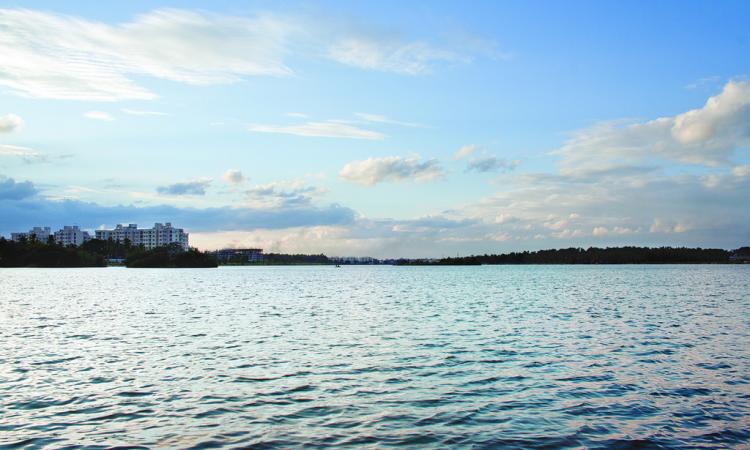
In a finding that could help better understand the future global climate scenario, scientists have found evidence that waters from the Persian Gulf as well as the Red Sea make its way into the Bay of Bengal. While the evidence of the presence of the Persian Gulf water was found at a depth range of 200 to 400 metres in the Bay, the Red Sea water was found at depths between 500 and 1000 metres.
Researchers have also found that the waters of the marginal seas bordering the Arabian Sea are transported into the Bay by the summer monsoon current which is seen to be a deep current extending to a depth of around 1 km. The waters were traced all over the Bay including the Andaman Sea.
The findings are significant as deep circulations of the oceans are key elements of the global climate system and are invoked in the context of both past climate and climate change studies. An ocean’s circulation, which is the circulation of its water mass, affects the movement of other properties such as heat, salt and oxygen. It is difficult, however, to obtain a direct measure of the circulation as the currents in deep oceans are usually weak. Consequently, studies generally focus on water masses that constitute the oceans.
A veteran marine scientist from Australia, R.J. Rochford had claimed in the 1960s that both the Persian Gulf and the Red Sea waters were present in the Bay of Bengal after analysing the data from the first International Indian Ocean Expedition (IIOE). Two Indian scientists, V.V.R. Varadachari and J.S. Sastry, backed his claim later. This, however, could not be confirmed so far. All studies down the years, whether model-based or observational, had indicated that these waters were confined to the Arabian Sea only on the western flank of India.
In a report published in a recent issue of the international journal, Climate Dynamics, the scientists involved in the present study noted that they were able to find evidence of these waters mainly due to the development of precise and accurate instrumentations capable of sampling continuously in the dynamic ocean. The research paper comes at a time when the oceanographic community is observing the 50th anniversary of IIOE.
The research team included D. Shankar, Vineet Jain, A. Kankonkar, Abhisek Chatterjee, P. Amol, A.M. Almeida, G.S. Michael, R. Luis, Amol Kamble, A.K. Hegde, R. Fernandes and Siddhartha Chatterjee of the National Institute of Oceanography, Goa; P.N.Vinayachandran of Indian Institute of Science, Bengaluru; Meenakshi Chatterjee of Basanti Devi College, Kolkata; A. Mukherjee of ESSO-Indian National Centre for Ocean Information Services, Hyderabad; and Umasankar Das of India Meteorology Department. (India Science Wire)